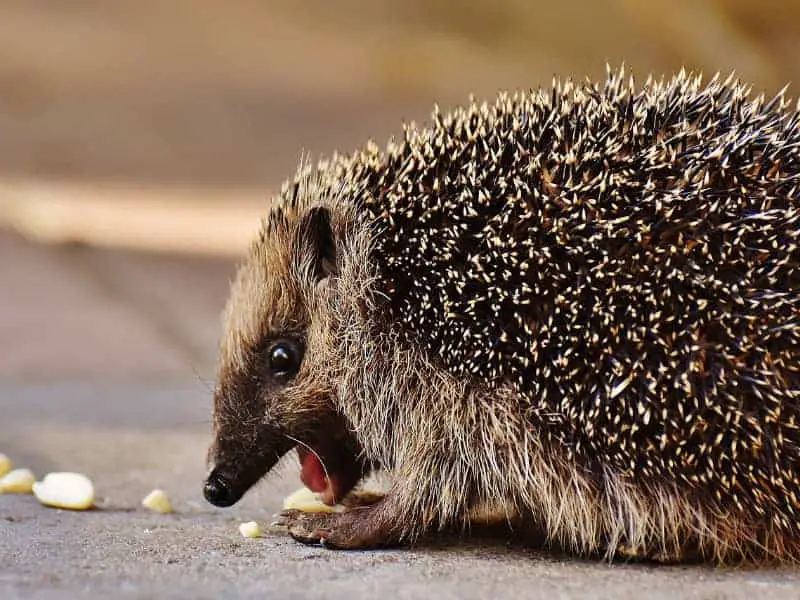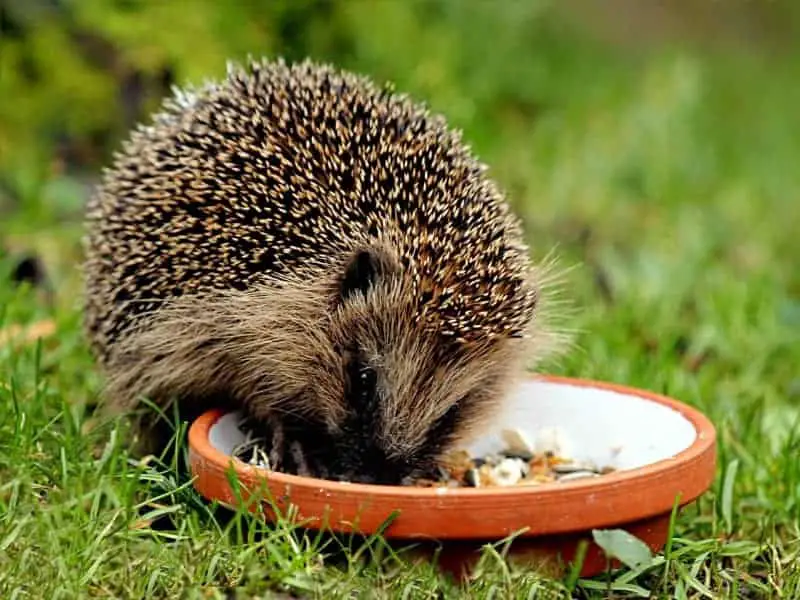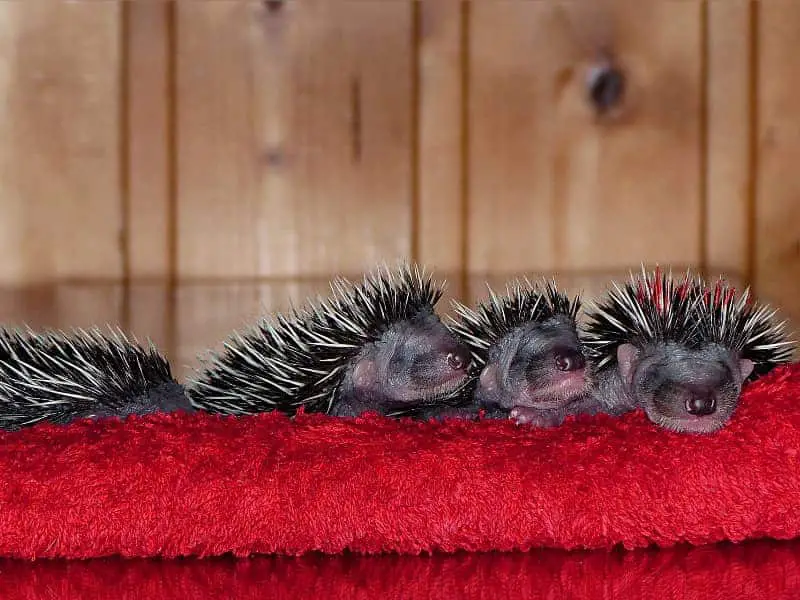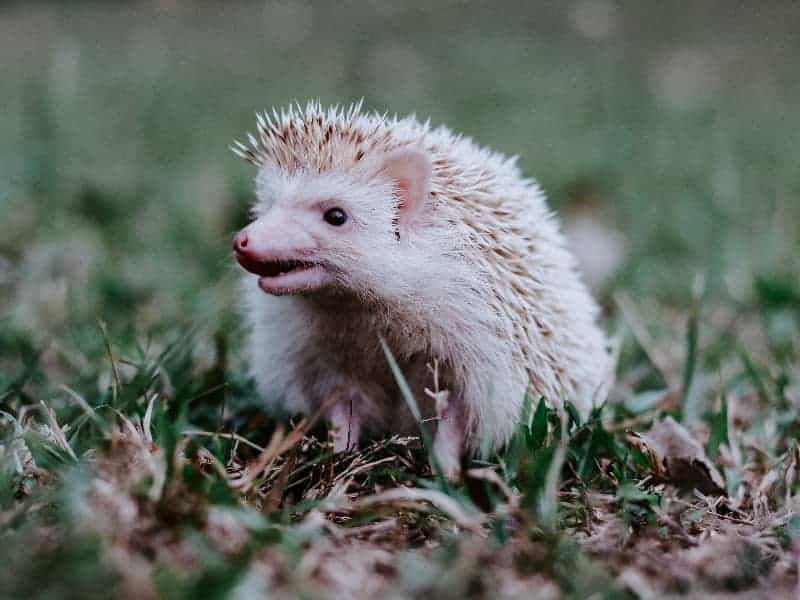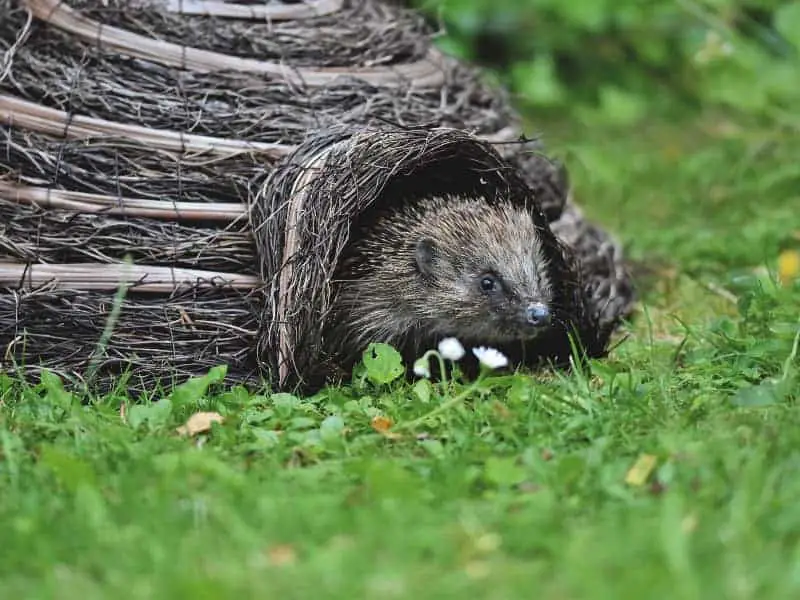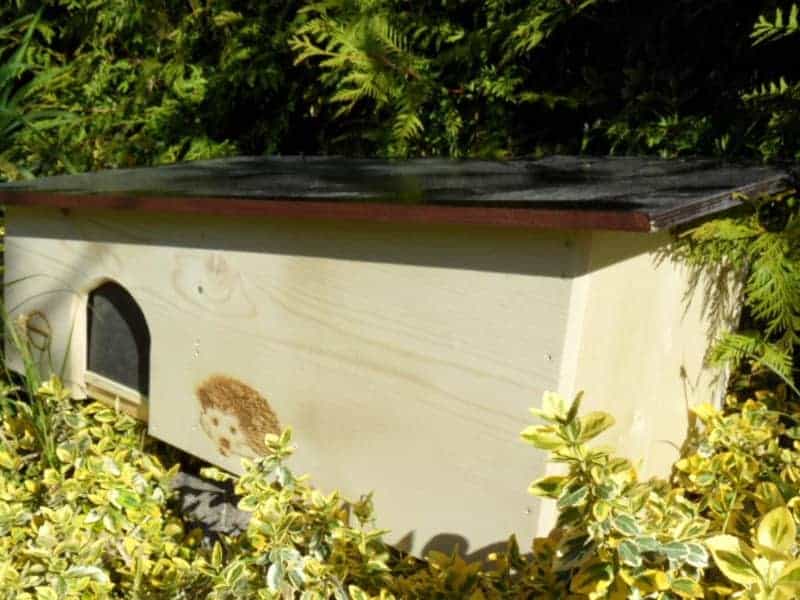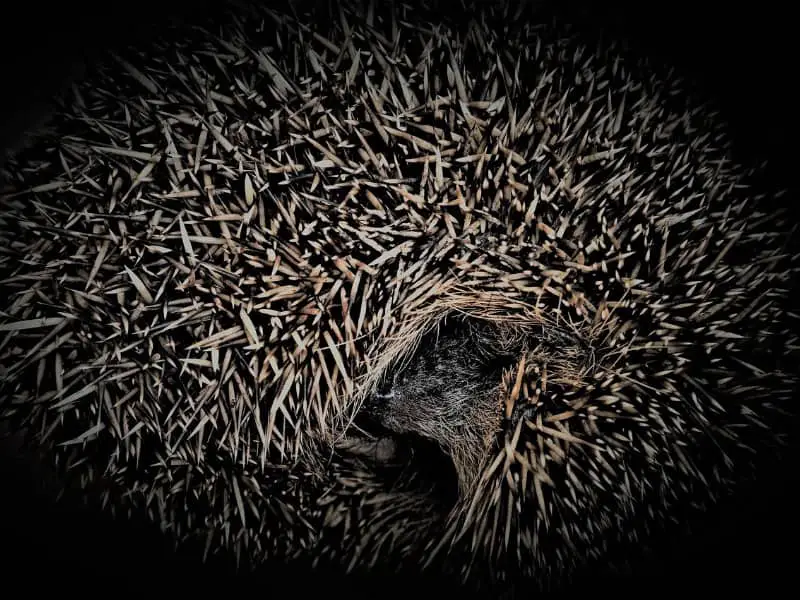
Hedgehog hibernation, how long does it last?
The average hedgehog hibernation lasts between 5 and 6 months. During this time, short sleep interruptions are normal. Most of the time the hedgehog stays in his nest and is not really disturbed.
Hedgehog hibernation with interruptions
If temperatures rise for several days, the hedgehog may become active and leave his nest. You can then with luck observe that he either urinates or looks for something to eat.
What happens to the hedgehog during hibernation?
Not only the hedgehog's body temperature, but also all metabolic processes are radically reduced. A hedgehog in hibernation hardly reacts to mechanical stimuli. Its body temperature approaches the ambient temperatures. At permanent 0 degrees and lower, the hedgehog produces a little heat again to maintain its minimum temperature.
Why do hedgehogs hibernate?
One of the main causes of the Hedgehog hibernation is the lack of food. The hedgehog has poorly functioning thermal insulation, which is why it would have to expend a lot of metabolic heat to keep its body temperature at about 34 degrees.
As soon as the food supply decreases in autumn, this is difficult or even impossible for the hedgehog. More and more of his energy suppliers disappear. In addition, the length of daylight decreases and the outside temperatures drop permanently. A hormonal change occurs in the hedgehog's body. He therefore retreats and begins his hibernation.
When does the hedgehog hibernate?
As soon as the hedgehog has eaten a sufficient fat cushion, he can begin hibernation. Depending on the weather, this period for males is around the beginning of October. Females do not go into hibernation until they have recovered from breeding hedgehogs. They take some time to reach proper hibernation weight. A young hedgehog should weigh at least 500 g at the beginning of hibernation so that it can survive this period under its own power.
What metabolic changes are taking place?
During hedgehog hibernation, all metabolic functions are shut down to economy mode. On average, this is only 1 to 5 % of an active animal.
- The body temperature drops almost to ambient temperature.
- The heartbeat decreases from 200 beats to about 1 to 2 beats per minute.
- Breathing rate drops from 50 to 13 times per minute.
- The values of the internal organs also change rapidly. Therefore, the blood glucose level also drops.
If the outside temperature is around 5 degrees, then the hedgehog begins to produce heat during hibernation in order not to freeze to death. Experts speak here of a minimum temperature.
Fall asleep and wake up the hedgehog
For hedgehog hibernation, the hedgehog needs a time of 5 to 6 hours to fall asleep. During the next weeks and months the sleeping hedgehog feeds on the white depot fat under the spiny bellows. He has eaten this in the summer and autumn.
Autumn gnawed. Nevertheless, short interruptions of hedgehog hibernation are not uncommon.
At a prolonged outside temperature of 10 degrees, the hedgehog begins to awaken from hibernation. This process can last for hours and requires a lot of energy. The hedgehog uses the so-called brown fat, which is stored in his shoulder area.
When waking up, the hedgehog's blood flow increases by about five times. At the same time, its heart and breathing rate increases. During this process you can often also see a trembling of the muscles, especially on the legs.
During hibernation hedgehog loses on average 30 % of its body weight. Therefore, the active phase of the emaciated animal begins directly with the search for food. Only then the hedgehog goes into its annual cycle with mating season and reproduction, until it is time for hibernation again.
Author

-
Garden animal - A life with nature
Welcome to my animal blog! My name is Dirk and I am happy to take you on my journey through the fascinating world of animals and gardening.
Born 54 years ago, I have had an insatiable curiosity for the animal world around me since childhood. Although I have moved professionally in other industries, my true passion has always been animals and nature. It is remarkable how a small garden has become such an important part of my life.
Many of my fondest memories are associated with the animals that share our home. Whether it's the curious squirrels that scurry across the trees in the morning, the colorful variety of birds that visit our feeders, or the busy bees and butterflies that pollinate our flowers, every moment with them is invaluable to me.
This blog is my contribution to share my experiences, discoveries and insights with like-minded people. Here I will share stories of unforgettable encounters with animals, give tips on gardening and creating wildlife-friendly habitats, and take you on my journeys through nature.
Thank you so much for being here!
Cordial,
Dirk aka garden animal
Last posts
- 27. February 2024PetsVeganes Hundefutter – Grün und Gesund?
- 18. January 2024ChickensOregano für Hühner
- November 27, 2023HamsterDiurnal hamsters
- November 24, 2023HamsterHamster hammock

